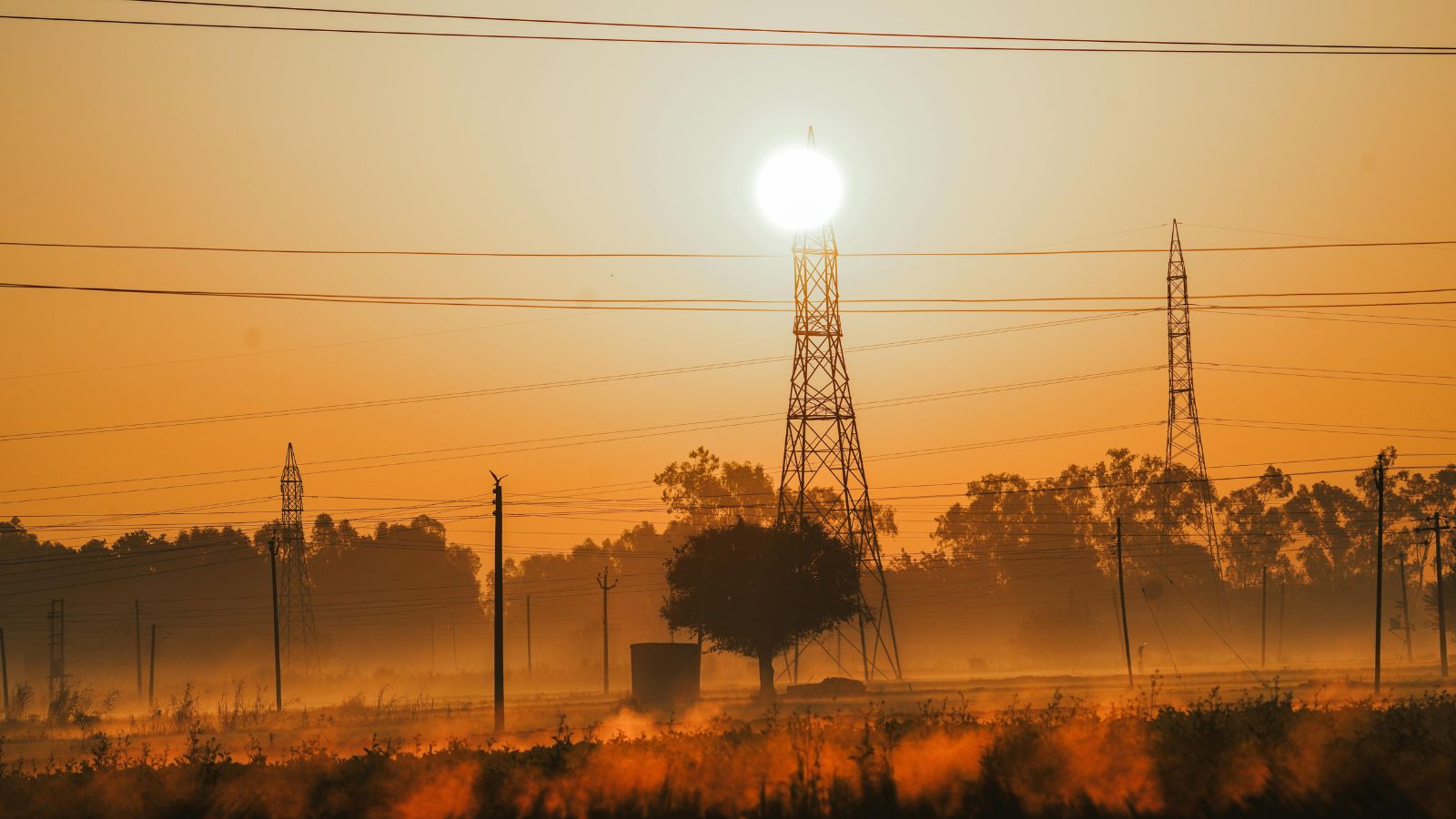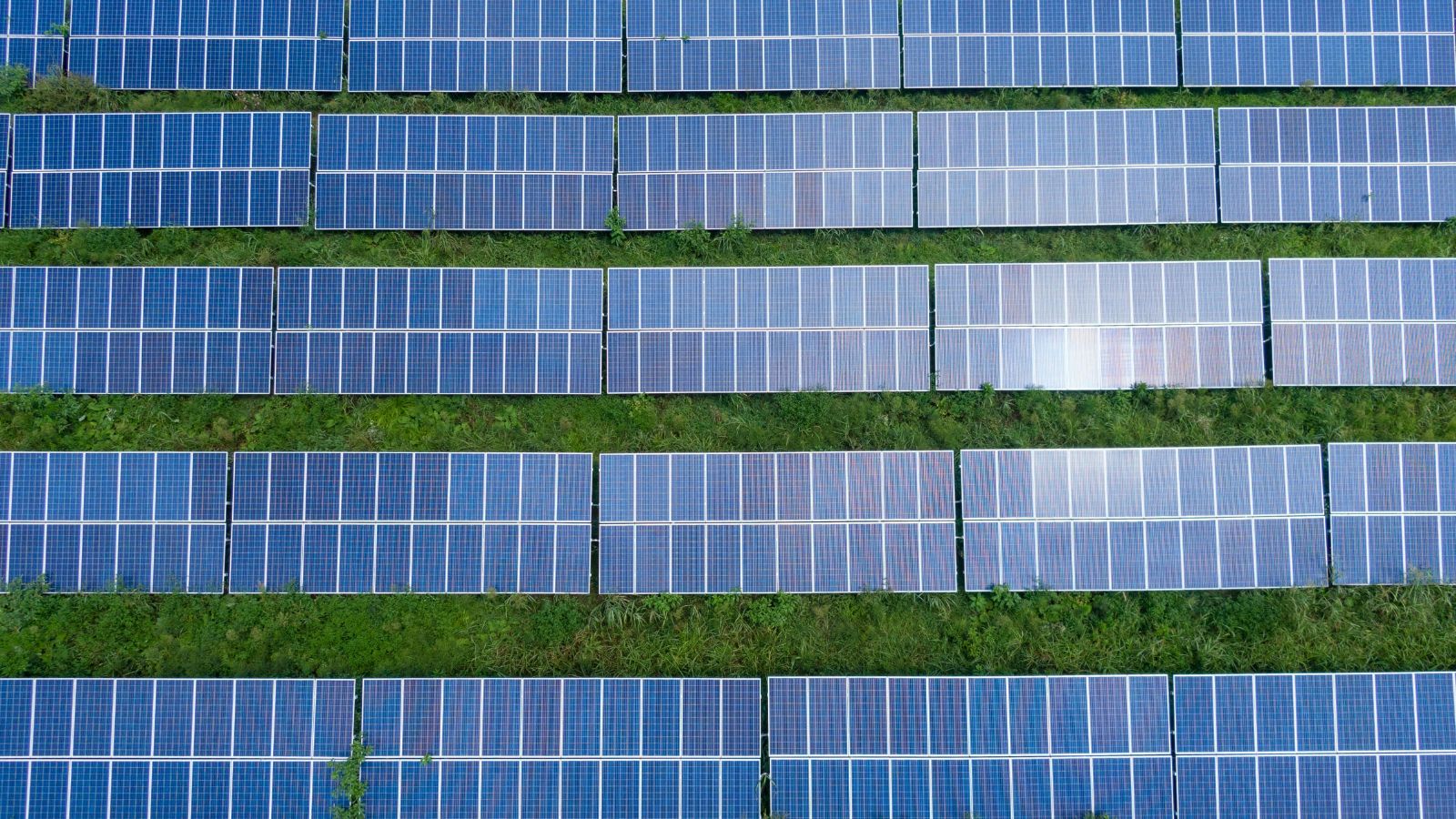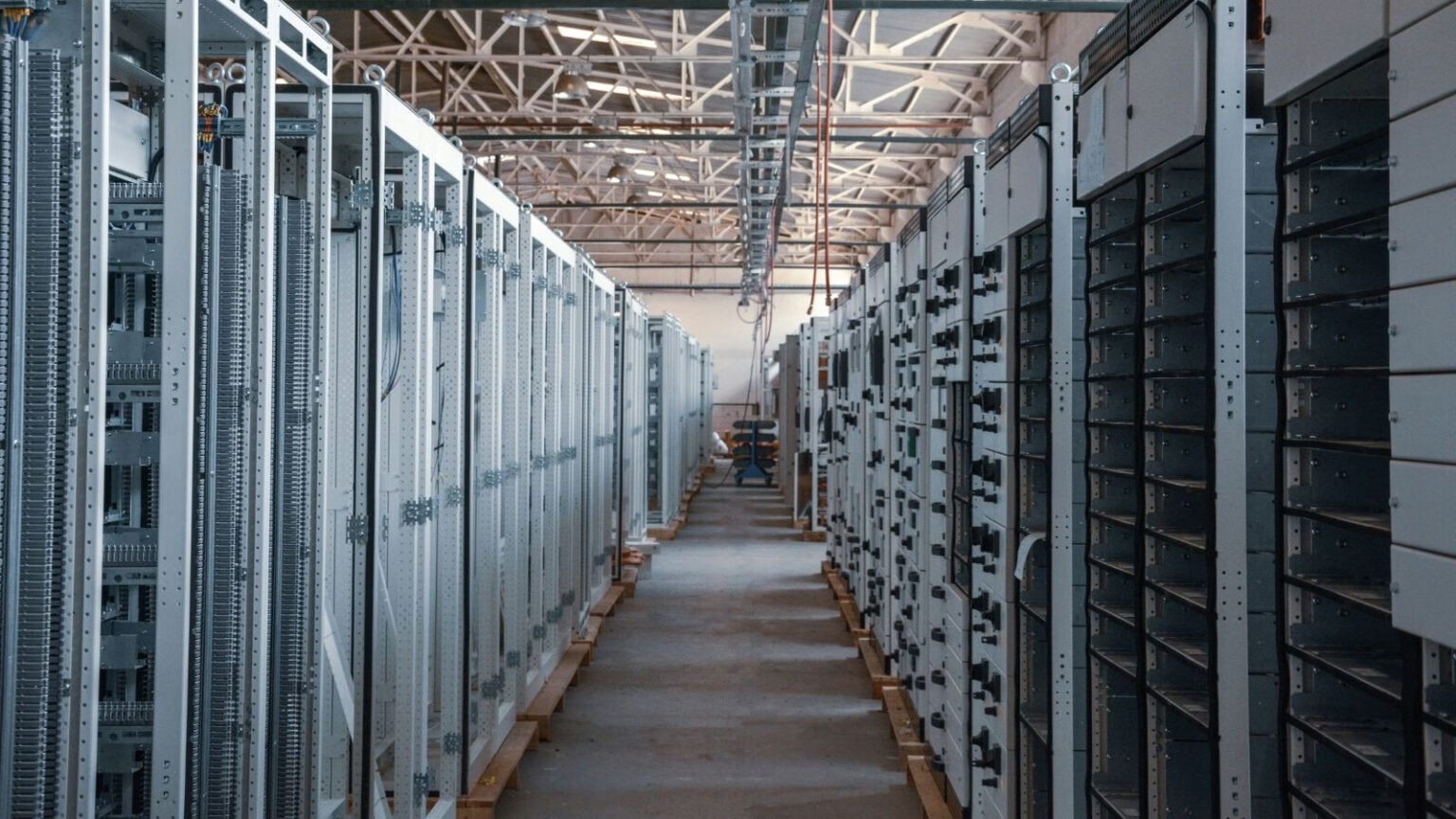Sustainable Energy
How Better Storage and Smarter Grids Could Break India’s Heat–Power Loop
Heatwaves drove 9% of India’s power demand surge in summer 2024; researchers call for rapid investment in storage, smart grids and renewable-backed cooling systems.

As India battles increasingly severe heat waves that are pushing electricity demand to record highs, a new study warns that the country is trapped in a dangerous heat–power loop — and only rapid investment in renewable energy infrastructure, grid upgrades and storage can break it.
The report, Breaking the Cycle, released on 20 November 2025 by Climate Trends and Climate Compatible Futures, shows that heat waves alone contributed nearly 9% of the surge in national power demand during April–June 2024, driving up emissions and straining power systems across states.
The study finds that rising temperatures, heat waves, electricity demand and fossil-fuel use are “no longer separate problems but converging threats,” placing worsening pressure on India’s grid, public-health systems, and vulnerable communities.
Heat waves intensifying across India
The number of summer days crossing 40°C rose sharply in the latter half of the decade. Fourteen states recorded a 15% rise in heat intensity between 2015 and 2024.
Central and eastern states such as Madhya Pradesh, Jharkhand and Chhattisgarh faced an average of 50 heatwave days every year, while northern states including Delhi, Uttar Pradesh, Punjab and Haryana saw the steepest temperature spikes.
Himalayan regions also showed sharp warming: Uttarakhand recorded an 11.2% rise in summer temperatures in 2024, along with a dramatic jump in heatwave days — from zero in 2023 to 25 in 2024. Ladakh saw a 9.1% increase.
A decade of rising demand and fossil-heavy peaks
India’s power system expanded from 285 GW in 2015 to 461 GW in 2024. Renewable energy capacity more than doubled — from 84 GW to 209 GW — but coal capacity also increased from 195 GW to 243 GW.
While renewables grew faster in absolute terms, coal remained the backbone during summer peaks. Over the decade:
- RE generation rose 121%
- Fossil-fuel generation rose 50%
Heat waves have pushed cooling demand sharply, increasing dependence on coal-heavy power generation and worsening emissions.
A heat–power–emissions trap
The increase in heat during the 2024 summer added 327 million tonnes of CO₂ in just the peak months. Over the last decade, summertime fossil-fuel use led to 2.5 gigatonnes of CO₂ emissions.
“Our research shows that increase in temperatures across India has consistently increased electricity demand predominantly for cooling needs, resulting in further dependence on fossil fuels. Meeting the summer power demand surge with fossil fuels has led to more emissions and air pollution, exacerbating climate change and worsening health crisis,” Dr. Manish Ram, CEO at Climate Compatible Futures, said in a media statement.
He added that the impacts fall disproportionately on rural areas and low-income communities who already struggle with energy access and heat vulnerability.
Storage, flexible generation and grid upgrades essential
The report argues that India cannot address heat waves and power shortages separately. Instead, it calls for urgent, large-scale investment in:
- Battery storage and pumped hydro
- Flexible renewable generation
- Smart grids and resilient transmission
- Demand-side management
- Urban cooling and distributed solar backups
“States hit by heat-driven spikes in power demand must urgently expand renewable energy and storage capacities to reduce their dependence on fossil fuels,” Dr. Ram said. “Impacts of continued use of fossil fuel for power generation are now being seen even in states that are mostly dependent on renewable energy, which necessitates better integration of renewables with storage and smart grids.”
Heat Action Plans are missing critical energy links
The report found that only four states, three cities and one district currently integrate renewable energy or storage solutions into their Heat Action Plans (HAPs).
Most HAPs lack:
- Renewable backup systems
- Cooling demand forecasting
- Energy resilience measures
- Grid stress assessments
The study concludes that future frameworks must embed renewable-powered cooling, distributed storage and smart-grid planning.
A climate and equity imperative
India’s annual temperature in 2024 rose 0.65°C above the 1991–2020 baseline, in line with global trends. The study notes that while India’s broader climate policies saved up to 440 MtCO₂ between 2015 and 2020, heat-driven fossil-fuel use is eroding those gains.
Aarti Khosla, Director of Climate Trends, said in a statement, “India’s heat waves and power shortages can no longer be treated as separate crises. They are converging. The only durable way out is to urgently upgrade our grid, invest in storage and enable flexible, climate-resilient electricity systems.”
She added, “Breaking this cycle is not just a climate imperative — it is an equity imperative for millions of Indians who are the least responsible but the most vulnerable to extreme heat.”
COP30
Clean Energy Push Could Halve Global Warming by 2040, New Analysis Shows
A new Climate Action Tracker analysis shows that tripling renewables, doubling energy efficiency and cutting methane could halve global warming by 2040

A rapid global shift to renewable energy, energy efficiency and methane cuts could halve the rate of global warming by 2040, dramatically altering the world’s climate trajectory, a new Climate Action Tracker (CAT) assessment finds.
The analysis shows that implementing the three core COP28 energy and methane goals—tripling renewable energy capacity, doubling energy efficiency improvements, and delivering steep methane cuts by 2030—would bring down projected warming from the current 2.6°C to 1.7°C by the end of the century.
Crucially, these actions would sharply slow near-term warming, reducing the pace of temperature rise by a third by 2035 and nearly half by 2040, compared to today’s rate of ~0.25°C per decade. This slowdown is critical not just for long-term climate goals but for immediate survival, the report stresses.
A Turning Point
The world is already struggling to cope with accelerating climate impacts. With ecosystems collapsing faster than species can adapt and communities facing worsening heatwaves, storms and crop failures, “catching up” on adaptation has become a global emergency.
CAT warns that under current policies, warming could continue rising throughout the century, leaving governments perpetually behind on adaptation planning. But halving the warming rate would give both people and ecosystems a fighting chance to adjust.
A 0.9°C Improvement in the Global Outlook
If all countries implement the three goals, the resulting emission cuts—14 GtCO₂e by 2030 and 18 GtCO₂e by 2035—would reduce expected warming this century by 0.9°C, one of the most significant improvements since the Paris Agreement.
“This is the single biggest step governments can take this decade, using goals they have already negotiated and agreed to,” the report notes.
Where the Reductions Come From
- Tripling renewables: ~40% of total emission reductions
- Doubling energy efficiency: ~40%
- Methane cuts: ~20%, but delivering disproportionate warming benefits due to methane’s strong short-term impact
Finance Is the Missing Link
The report underscores that technology is not the barrier—finance is. Many emerging economies cannot deploy renewables or upgrade grids at the necessary pace without scaled-up international support.
Still, the authors say the pathway is feasible and grounded in technologies already available at commercial scale.
While the world is almost certain to overshoot 1.5°C by the early 2030s, the duration and magnitude of that overshoot will determine future levels of loss and damage. Delivering the COP28 energy and methane goals, the report concludes, is the most powerful tool the world currently has to limit that overshoot and avoid runaway climate impacts.
COP30
No Growth in Fossil Power This Year as Solar Output Hits Record High
Global fossil fuel generation expected to flatline in 2025 for the first time since the pandemic, as record solar and wind growth meet all new electricity demand, according to Ember’s Q3 Global Power Report.

The world’s power sector is on the verge of a historic turning point, with no growth in fossil fuel generation expected in 2025 for the first time outside of a global crisis year, according to the latest Q3 Global Power Report by the energy think tank Ember.
Record-breaking increases in solar and wind power have met — and even exceeded — the rise in global electricity demand in the first three quarters of 2025, pushing fossil fuel use into stagnation.
“Record solar power growth and stagnating fossil fuels in 2025 show how clean power has become the driving force in the power sector,” said Nicolas Fulghum, senior data analyst at Ember. “Historically a growth segment, fossil power now appears to be entering a period of stagnation and managed decline.”
Solar Surges, Fossils Stall
Between January and September 2025, solar generation rose by 498 terawatt-hours (TWh) — up 31% year-on-year — marking the largest increase ever recorded over a nine-month period. Wind power added another 137 TWh, growing 7.6% compared to 2024. Combined, solar and wind generation expanded by 635 TWh, exceeding the global demand rise of 603 TWh (2.7%).
Nuclear output grew modestly by 33 TWh, while hydropower declined by 54 TWh due to unfavourable weather conditions. As a result, fossil fuel generation remained virtually unchanged, falling by 17 TWh (–0.1%) compared to the same period last year.
Ember forecasts that this balance will continue through the end of 2025, leading to the first year since the Covid-19 pandemic in which fossil generation does not increase despite global demand growth.
Clean Power Takes the Lead
The rise of clean power has reshaped the global electricity mix. In the first three quarters of 2025, wind and solar accounted for 17.6% of global electricity generation, up from 15.2% during the same period in 2024. Meanwhile, fossil fuels’ share fell from 58.7% to 57.1%.
All renewables combined — including hydro, solar, and wind — now supply 34.2% of global electricity, surpassing coal’s share for the second consecutive year.
China and India Tip the Global Balance
A fall in fossil fuel generation in China (–52 TWh, –1.1%) and India (–34 TWh, –3.3%) has been pivotal in keeping global fossil growth flat.
In China, the drop signals a structural shift, as fast-expanding solar and wind capacity met all new electricity demand.
In India, the decline is described as temporary, resulting from milder weather conditions that reduced cooling demand and allowed renewable generation to offset the slower rise in electricity use.
“China, the largest source of fossil growth, has turned a corner, signalling that reliance on fossil fuels to meet growing power demand is no longer required,” said Fulghum.
Demand Growth Decoupled from Fossil Fuels
Ember notes that 2025 is expected to record the sixth-largest increase in electricity demand in history — around 831 TWh — yet fossil generation remains flat. This marks the first time a significant rise in global demand has been met entirely by clean sources.
Prior to this year, falls in fossil generation occurred only during global downturns — in 2009 (financial crisis) and 2020 (pandemic lockdowns).
A Managed Decline Begins
Ember’s analysis concludes that fossil fuel power is entering a new phase of “managed decline,” driven by the accelerating deployment of clean energy and moderated electricity demand. The challenge, the think tank says, lies in sustaining renewable growth to achieve deeper cuts in fossil generation beyond 2025.
“Solar power has replaced fossil fuels as the dominant driver of growth in the power sector,” the report states. “The task now is to sustain this momentum in 2026 and beyond — not only to meet rising demand but to actively drive down fossil generation.”
Earth
Data Becomes the New Oil: IEA Says AI Boom Driving Global Power Demand
Global energy systems enter a new phase as electricity demand surges from data centres and AI, prompting the IEA to warn of mounting risks across fuels, minerals, and grids in its World Energy Outlook 2025.

The world is facing a more complex and fragile energy security landscape than ever before, according to the World Energy Outlook (WEO) 2025 released by the International Energy Agency (IEA) on Wednesday. The report calls for greater diversification of energy supplies and stronger international cooperation to navigate a period marked by overlapping risks across fuels, technologies, and supply chains.
The IEA notes that energy security tensions now span oil, gas, critical minerals, and electricity systems simultaneously — a situation without precedent in recent decades. “There is no other time when energy security tensions have applied to so many fuels and technologies at once,” said Fatih Birol, Executive Director of the IEA, in a statement. “Governments must show the same focus that they did after the 1973 oil shock.”
Emerging economies drive new demand
The WEO 2025 highlights a major shift in global energy demand patterns. India and Southeast Asia, along with countries in the Middle East, Africa, and Latin America, are emerging as the main drivers of future energy consumption. Collectively, these regions are expected to replace China — which accounted for 50% of oil and gas demand growth and 60% of electricity demand growth since 2010 — as the primary forces shaping global energy markets.
Data centres, AI surge push electricity demand
Electricity remains at the core of modern economies, with consumption projected to grow faster than total energy use across all scenarios. Investments in electricity generation have surged by nearly 70% since 2015, yet spending on power grids has increased at less than half that rate — creating potential bottlenecks.
The IEA notes that global electricity investment already equals half of total energy spending. Demand from data centres and artificial intelligence is now rising rapidly even in advanced economies. The report estimates that global data centre investment will reach USD 580 billion in 2025, surpassing the USD 540 billion being spent on oil supply — a striking indicator of how digitalisation is reshaping energy priorities.
Critical mineral dependency intensifies
The report warns of growing vulnerabilities in critical mineral supply chains, with one country dominating refining for 19 of 20 key strategic minerals, averaging a 70% global market share. These materials are crucial not only for clean energy technologies such as batteries and electric vehicles but also for defence, aerospace, and AI hardware.
Geographic concentration in refining has increased for nearly all major energy minerals since 2020, particularly for nickel and cobalt, making diversification a strategic priority for energy security.
Fossil fuel outlook and LNG expansion
The WEO 2025 finds ample global oil and gas supplies in the near term, with oil prices stabilising around USD 60–65 per barrel. A wave of liquefied natural gas (LNG) projects is also reshaping gas markets, with 300 billion cubic metres of new annual capacity expected by 2030 — a 50% increase over current levels. About half of this new capacity is being developed in the United States, and another 20% in Qatar.
Despite short-term supply stability, the IEA cautions that both oil and gas markets remain exposed to geopolitical shocks and volatile demand.
Climate goals off track
The report delivers a sobering message on global climate progress: no scenario keeps global warming below 1.5°C this century without drastic emissions cuts. While the pathway to net zero by 2050 could eventually bring temperatures back below that level, the world is already overshooting near-term targets.
About 730 million people still lack access to electricity, and two billion depend on unsafe cooking fuels. A new IEA scenario outlines universal electricity access by 2035 and clean cooking by 2040, driven largely by liquid petroleum gas (LPG) and renewable options.
A new era of electricity and resilience
The IEA describes the current moment as the “Age of Electricity,” where electric power underpins over 40% of global economic activity but still represents only 20% of final energy use. The report stresses that expanding grids, storage, and renewable capacity must accelerate to meet both climate and economic goals.
“Breakneck demand growth from data centres and AI is helping drive up electricity use in advanced economies,” said Dr Birol. “Those who say that ‘data is the new oil’ will note that investment in data infrastructure now exceeds spending on global oil supply — a striking example of the changing nature of modern economies.”
-

 Know The Scientist5 months ago
Know The Scientist5 months agoRemembering S.N. Bose, the underrated maestro in quantum physics
-

 Space & Physics4 months ago
Space & Physics4 months agoJoint NASA-ISRO radar satellite is the most powerful built to date
-

 Society5 months ago
Society5 months agoShukla is now India’s first astronaut in decades to visit outer space
-

 Space & Physics4 months ago
Space & Physics4 months agoNew double-slit experiment proves Einstein’s predictions were off the mark
-

 Society6 months ago
Society6 months agoAxiom-4 will see an Indian astronaut depart for outer space after 41 years
-

 The Sciences5 months ago
The Sciences5 months agoHow a Human-Inspired Algorithm Is Revolutionizing Machine Repair Models in the Wake of Global Disruptions
-

 Society6 months ago
Society6 months agoWhy the Arts Matter As Much As Science or Math
-

 Earth6 months ago
Earth6 months agoWorld Environment Day 2025: “Beating plastic pollution”


































